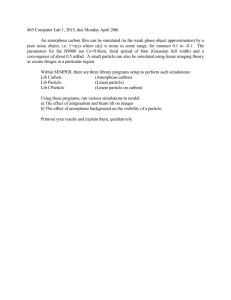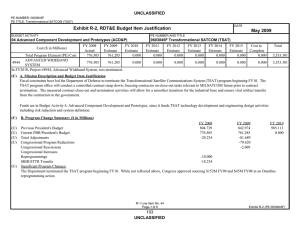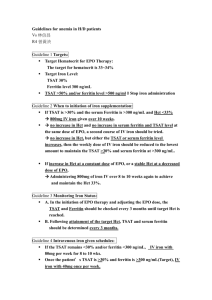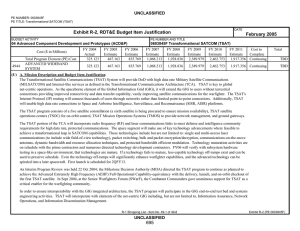b) Find distribution of . (5%)
advertisement
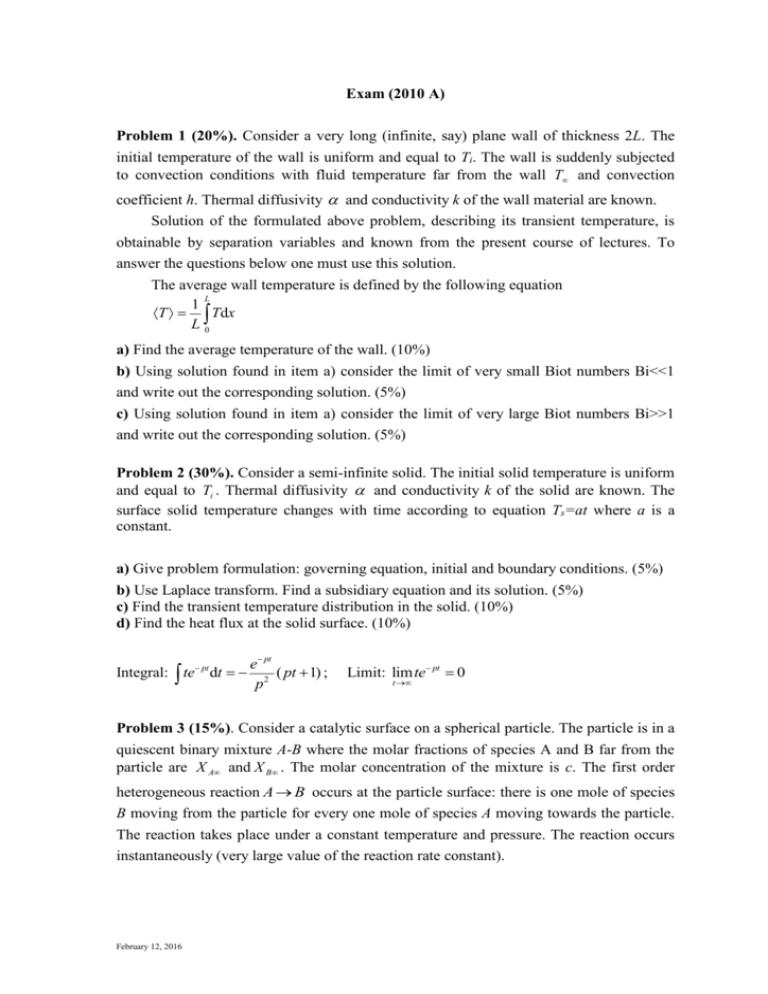
Exam (2010 A) Problem 1 (20%). Consider a very long (infinite, say) plane wall of thickness 2L. The initial temperature of the wall is uniform and equal to Ti. The wall is suddenly subjected to convection conditions with fluid temperature far from the wall T and convection coefficient h. Thermal diffusivity and conductivity k of the wall material are known. Solution of the formulated above problem, describing its transient temperature, is obtainable by separation variables and known from the present course of lectures. To answer the questions below one must use this solution. The average wall temperature is defined by the following equation L 1 T Tdx L0 a) Find the average temperature of the wall. (10%) b) Using solution found in item a) consider the limit of very small Biot numbers Bi<<1 and write out the corresponding solution. (5%) c) Using solution found in item a) consider the limit of very large Biot numbers Bi>>1 and write out the corresponding solution. (5%) Problem 2 (30%). Consider a semi-infinite solid. The initial solid temperature is uniform and equal to Ti . Thermal diffusivity and conductivity k of the solid are known. The surface solid temperature changes with time according to equation Ts=at where a is a constant. a) Give problem formulation: governing equation, initial and boundary conditions. (5%) b) Use Laplace transform. Find a subsidiary equation and its solution. (5%) c) Find the transient temperature distribution in the solid. (10%) d) Find the heat flux at the solid surface. (10%) Integral: te pt dt e pt ( pt 1) ; p2 Limit: lim te pt 0 t Problem 3 (15%). Consider a catalytic surface on a spherical particle. The particle is in a quiescent binary mixture A-B where the molar fractions of species A and B far from the particle are X A and X B . The molar concentration of the mixture is c. The first order heterogeneous reaction A B occurs at the particle surface: there is one mole of species B moving from the particle for every one mole of species A moving towards the particle. The reaction takes place under a constant temperature and pressure. The reaction occurs instantaneously (very large value of the reaction rate constant). February 12, 2016 a) Find molar average velocity v * of the mixture. (5%) b) Find distribution of X A . (5%) c) Find molar flux N A at the particle surface. (5%) Assume: 1) one-dimension radial steady-state diffusion. 2) binary diffusion coefficient DAB const. Problem 4 (20)%. Consider steady-state equilibrium vaporization of a small liquid droplet in a gaseous binary mixture (gas-vapor). The temperature of the mixture far from the vaporizing droplet is T1 , the pressure there is p and vapor mass fraction is YA . The saturation temperature at the droplet surface is Tsat and vapor mass fraction is YAsat (YAsat YA ) . Consider a situation when the temperature far from the droplet is T 2 such that T 2 T1 (parameters p and YA remain unchanged). How this will change Tsat and YAsat ? Choose one answer from those listed below: A, B, C, D, or E. A. Tsat B. Tsat C. Tsat D. Tsat E. Tsat and YAsat increase and YAsat decrease and YAsat do not change. rises while YAsat decreases. decreases while YAsat rises. Problem 5 (15%). Consider a dry, atmospheric air in parallel flow over 0.5-m-long plate whose surface is wetted. The air velocity is 1 m/s, and the air and water are at a temperature of 300 K. Due to the air flow, the velocity and concentration boundary layers are formed near the surface. a) Calculate the evaporation rate per unite width of the plate. (7%) b) Calculate the heat loss per unite width of the plate. (8%) Data: Air (T=300 K, 1 atm): 15.89 106 m2 /s ; water 300 K: £ h fg 2438 kJ/kg ; water-air (300 K, 1 atm): DAB 0.26 104 m 2 /s , Sc=0.611; water vapor (300K): A, sat 0.0256kg/m3 GOOD LUCK!







